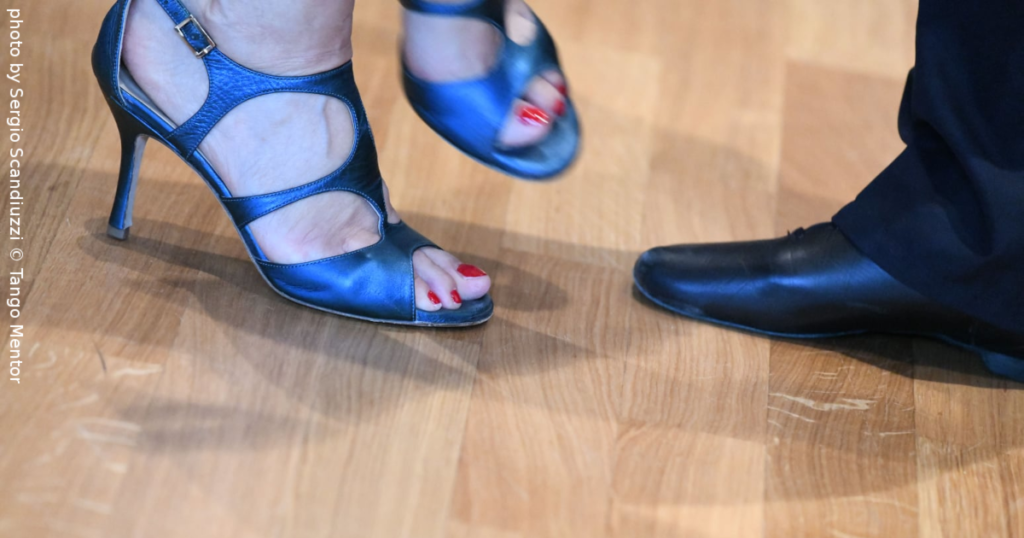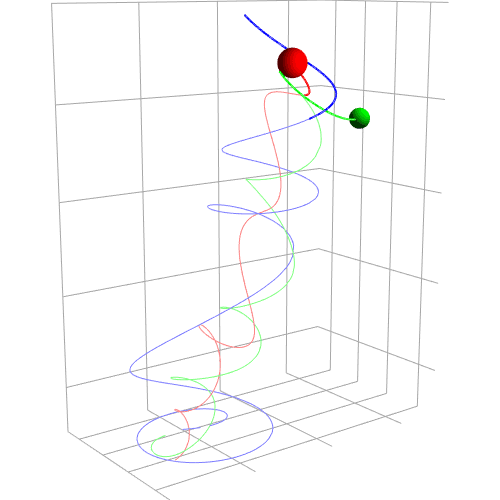
I’ve been wanting to write about tango minimalism for a while, and yet my thoughts on this topic are so intertwined with other topics that whenever I start – I end up writing about other stuff. In fact, the nature of simplicity is that it’s connected to complexity in unpredictable ways: it contains everything and yet shows very little in form.
It works for art – and it works for social tango as well, despite the fact that social dancing is not an art form.
Dancing Simple Is Hard
“I saw the angel in the marble and carved until I set him free.” – Michelangelo
People usually think that when you start with tango, your dancing is at first simple and then, as you gain knowledge, it becomes complex. In fact, the opposite is the truth. Years of teaching experience taught me that everything for the beginner is complicated and complex.
It is complicated because there are things in tango that are difficult to understand without experiencing them: the beginner often has no idea where they are and where they are headed. For example, they’re so focused on the movements that they have no way to focus on the joy of connection.
On the other hand, learning tango is a complex undertaking even without that inexperience – there are many different concepts and skills that have to work in synchronicity. You need time to learn them and make them work together, and then maybe one day, you will get to the point when it works so well that it becomes simple.
When the master does it, it looks simple. You only discover how complex it is when you start learning it.
The Wisdom of Being in “Now”
“When once you have tasted flight, you will forever walk the earth with your eyes turned skyward, for there you have been, and there you will always long to return.” – Leonardo Da Vinci
Everything everywhere all at once is impossible. I guess you know the wisdom that you don’t set out to build a wall – you just lay one brick at a time, and soon you will have a wall. When you dance tango, everything happens now: the past is gone and the future is not yet. All you have is the movement and the embrace that happens now.
You should avoid doing transitional steps: moves that are just placeholders to take you to another step. Give meaning to everything!
I strongly believe that if you want to build a pleasurable experience in tango, you should pay attention to your every movement like it’s the showpiece. Learn how to enjoy even the simplest walking, and then the masterpiece will emerge from it.
You don’t set out to build a tanda; you focus to make this step the best you can… I’m not talking about sequence, I am talking about one move of your leg, one simple step. You touch the floor with your foot and then transfer the weight on it – and in that point is all your tango… your embrace stands on that foot, your future moves start right there, so be sure to execute it the best you can.
Be sure also to experience it fully and enjoy it. For, when you discover that pleasure, then the whole world of complexity and wonders will be offered to you.
If you like this article, please consider supporting my work with a small donation/gratuity. As much as you feel it helps us create a better tango world. Your support keeps this blog alive!
From my heart to yours!
Ivica
Securely processed by PayPal
It’s Never Complex, It Just Feels That Way
“Simplicity is the final achievement. After one has played a vast quantity of notes and more notes, it is simplicity that emerges as the crowning reward of art.” – Frédéric Chopin
When it comes to movement, dancing might look very complex, especially when one doesn’t understand what’s going on; but that is just an illusion. Complexity emerges from simplicity. You have to let go of your ambition to do more, enjoy in less – and it will naturally lead to complexity.
It’s just like the three body problem – you have just three celestial bodies moving in each other’s gravitational vortex; and it doesn’t matter that they’re just three and move by simple rules – it creates a complex and unpredictable pattern.

I’ve heard critics saying that milonguero is “too boring”, “oversimplified” and other stuff, but I can argue that what they call “tango salon” (and nuevo) is oversimplified too. It may have a rich vocabulary of steps, but the side of connection and the emotional part are poor and neglected. Complexity there is not emergent, but it exists for its own sake.
It’s always the dancer’s choice to do steps they want, but what’s the point? Are the steps there just for their own sake, or do they fulfill a higher purpose? You can make a shirt like this – no one can stop you: but why? A normal shirt can serve the purpose and be elegant as well – without staying in the way of enjoying your time.

Of course, if the purpose is to attract attention – yes, it works; but I don’t think the purpose of a mature tango dancer should be to attract other people’s attention.
As you might have noticed, we’ve come full circle. When one is a beginner dancer, everything is hard and seems complex. As one learns and gathers experience, their dancing becomes simpler, and they learn to enjoy simplicity (I believe this happens only if they’re properly guided to dance socially and not show off).
And then, as some sort of miracle, from that simplicity, a world of complexity emerges… majestic, enchanting, sophisticated… and mightily elegant.

I like minimalism. My approach to tango and to music is, I think, fairly minimalistic. I’m not sure whether I agree with your particular articulation of the issue. Because it’s actually not that easy to do minimalism. It takes a lot of effort to get to the essential and to get rid of the fluff. Then the problem is, how do you make money out of that? How do you market minimalism? The reason for the whole dance teaching industry is that maximalism makes money. You have to bamboozle people with all that stuff to make them pay. If you spend 10 months writing a book that provides a minimalist approach you get crickets. That’s modern society for you.
“Social” tango is just that, or supposed to be a “social’ gathering where people meet and enjoy each others company. Lets stop trying to call it high art, when it isn’t. Professional teachers who have trained in dance all their lives are just that…the rest of us are….amateurs. Judicious use of well learned figures and steps, shows people what :your” tango is and is yours alone and sets you apart from other dancers. I have danced open embrace with several wonderful followers all over the US, I have also had wonderful close embrace tandas with followers who stuck to me like glue. Whatever style of tango is yours…do it and do it well, respect other people on the dance floor and have fun.
I think professionalisation in the arts is a fairly recent thing. True, there were various ‘masters’ throughout history, but modern society professionalises everything through schooling.
So while I agree with you, I think that dancing can be an art without the connotation that ‘art’ has these days, which in dancing means something like ‘stage performance’. Virtually all dance teaching nowadays is based on a performance theory of dance.
While there has been formalised dance teaching since at least 1400’s at the court of the Medici’s, it is only in the 20th century that dancing has become so strongly associated with the image via the use of the mirrors and more recently of the video. As you say, dancing has been for the most part a social occasion. I think we need to return to the earlier conceptions of dancing.
Also to the detriment of tango dancing, it has become attached to the concept of rhythm. These are the things that render the whole affair much more complex than necessary because of our contemporary impoverished understanding of music and dance.